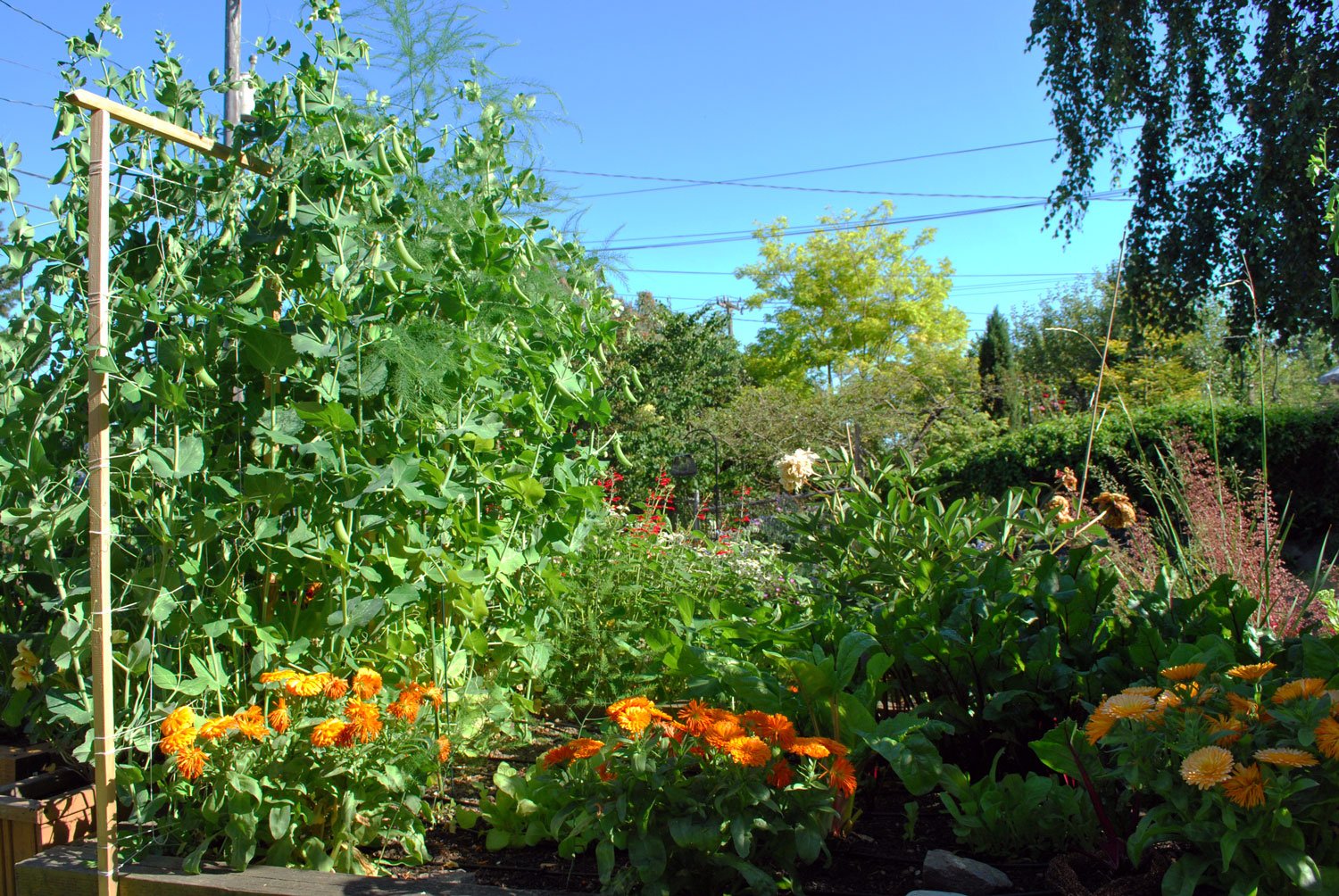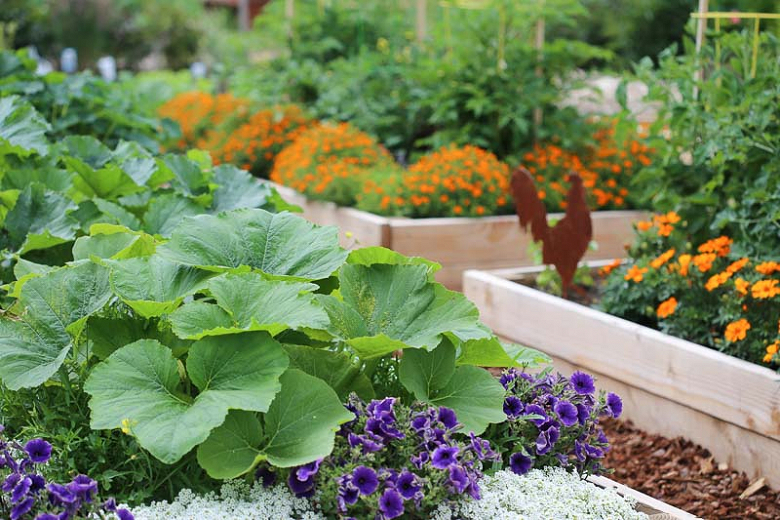The Best Companion Plants For Calendula
The Best Companion Plants for Calendula
Calendula is a beautiful and versatile flower that can be grown in a variety of settings. It's also a great companion plant for other vegetables and herbs, providing a number of benefits.
In this blog post, we'll discuss the best companion plants for calendula, as well as the benefits of companion planting. We'll also provide some tips on how to plant and care for calendula in your garden.
What is Companion Planting?
Companion planting is a gardening technique that involves planting certain plants together to benefit each other. Companion plants can help to improve the growth, health, and productivity of each other.
There are a number of different benefits to companion planting. For example, companion plants can:
- Attract beneficial insects and pollinators
- Repel pests and diseases
- Improve soil health
- Increase yields
Why Calendula Makes a Great Companion Plant
Calendula is a great companion plant for a number of reasons. It's a hardy plant that's easy to grow, and it has a number of beneficial properties.
Here are some of the benefits of planting calendula with other plants:
- Attracts beneficial insects and pollinators. Calendula is a magnet for beneficial insects, such as ladybugs, lacewings, and hoverflies. These insects help to control pests, such as aphids and spider mites.
- Repels pests and diseases. Calendula's strong scent can help to repel pests, such as nematodes and cabbageworms. It can also help to prevent fungal diseases, such as powdery mildew.
- Improves soil health. Calendula is a good source of nitrogen, which can help to improve soil health. It also helps to suppress weeds.
- Increases yields. Calendula can help to increase the yields of other plants. For example, it's been shown to increase the yields of tomatoes, carrots, and cucumbers.
Best Companion Plants for Calendula
There are a number of different plants that make good companion plants for calendula. Some of the best include:
- Asparagus: Asparagus is a heavy feeder, and calendula helps to improve the soil around it.
- Beans: Calendula helps to repel aphids, which can be a problem for beans.
- Broccoli: Calendula helps to improve the flavor of broccoli.
- Carrots: Calendula helps to repel carrot flies.
- Cucumbers: Calendula helps to attract pollinators, which can help to increase the yields of cucumbers.
- Herbs: Calendula can be planted with a variety of herbs, such as basil, thyme, and oregano.
- Potatoes: Calendula helps to repel pests, such as potato beetles.
- Squash: Calendula helps to improve the pollination of squash.
How to Plant and Care for Calendula
Calendula is a relatively easy plant to grow. It prefers full sun, but it can also tolerate partial shade. It's a good idea to plant calendula in well-drained soil.
Calendula seeds can be sown directly in the garden in the spring or fall. The seeds will germinate in about 1-2 weeks.
Calendula plants don't require a lot of care. They should be watered regularly, especially during hot, dry weather. They may need to be deadheaded to encourage more blooms.
Conclusion
Calendula is a beautiful and versatile flower that can be grown in a variety of settings. It's also a great companion plant for other vegetables and herbs, providing a number of benefits.
If you're looking for a way to improve the health and productivity of your garden, consider planting calendula. It's a hardy, easy-to-grow plant that's sure to add beauty and benefits to your garden.
Calendula is a beautiful and versatile flower that can be grown in a variety of gardens. It is also a great companion plant, meaning that it can be grown alongside other plants to benefit both of them.
Some of the best companion plants for calendula include:
- Asparagus: Calendula helps to repel asparagus beetles.
- Beans: Calendula helps to attract beneficial insects that prey on aphids, which can be a problem for beans.
- Broccoli: Calendula helps to repel cabbage worms.
- Carrots: Calendula helps to repel carrot flies.
- Cucumbers: Calendula helps to attract pollinators that help to pollinate cucumbers.
- Potatoes: Calendula helps to repel potato beetles.
- Pumpkins: Calendula helps to attract pollinators that help to pollinate pumpkins.
- Tomatoes: Calendula helps to repel tomato hornworms.
If you are interested in learning more about companion planting with calendula, I recommend visiting the website Gardenia Inspiration. This website has a wealth of information about companion planting, including a list of the best companion plants for calendula.
FAQ of companion plants for calendula
Q: What are some good companion plants for calendula?
A: Calendula is a great companion plant for many other vegetables and flowers. Some of its best companions include:
- Asparagus: Calendula helps to repel asparagus beetles.
- Beans: Calendula helps to attract beneficial insects that prey on aphids, such as ladybugs and lacewings.
- Carrots: Calendula helps to repel carrot root fly.
- Cucumbers: Calendula helps to attract pollinators, which can help to increase cucumber pollination.
- Peas: Calendula helps to repel pea aphids.
- Potatoes: Calendula helps to repel potato beetles.
- Squash: Calendula helps to repel squash bugs.
- Tomatoes: Calendula helps to attract beneficial insects that prey on tomato hornworms, such as parasitic wasps.
Q: What are the benefits of companion planting with calendula?
A: There are many benefits to companion planting with calendula. Some of these benefits include:
- Increased pollination: Calendula attracts pollinators, which can help to increase pollination of other plants in the garden. This can lead to larger yields and better quality fruits and vegetables.
- Repulsion of pests: Calendula has insect-repelling properties. It can help to repel aphids, beetles, nematodes, and other pests. This can help to reduce the need for chemical pesticides.
- Improved soil health: Calendula is a nitrogen-fixing plant. This means that it can help to improve the nitrogen content of the soil. This can benefit other plants in the garden.
- Disease suppression: Calendula has some disease-suppressing properties. It can help to suppress the spread of diseases such as powdery mildew and fusarium wilt.
Q: What are some mistakes to avoid when companion planting with calendula?
A: There are a few mistakes to avoid when companion planting with calendula. These include:
- Not planting enough calendula: Calendula is a relatively small plant. If you don't plant enough of it, it may not be effective at attracting pollinators or repelling pests.
- Planting calendula too close to other plants: Calendula can be a bit of a bully. If you plant it too close to other plants, it may crowd them out.
- Planting calendula in the wrong location: Calendula prefers full sun. If you plant it in a shady location, it may not flower as well.
Q: Where can I find more information about companion planting with calendula?
A: There are a number of resources available that can provide you with more information about companion planting with calendula. Some of these resources include:
- The Companion Planting Handbook by Louise Riotte
- The Vegetable Gardener's Companion by Ruth Stout
- The New American Gardener by Eliot Coleman
- The Organic Gardener's Handbook of Natural Pest and Disease Control by Jeff Gillman
- The Gardener's Guide to Companion Planting by Susan Mulvihill
Image of companion plants for calendula
5 different images of companion plants for calendula from Pinterest:
- Asparagus. Asparagus is a good companion plant for calendula because it helps to repel asparagus beetles.
- Beans. Beans and calendula are both nitrogen-fixing plants, which means they help to improve the soil quality for each other.

- Broccoli. Broccoli and calendula are both susceptible to cabbage moths, so planting them together helps to deter these pests.

- Carrots. Carrots and calendula help to repel carrot flies, which is a major pest of carrots.

- Cucumbers. Cucumbers and calendula help to repel cucumber beetles, which is a major pest of cucumbers.

Post a Comment for "The Best Companion Plants For Calendula"